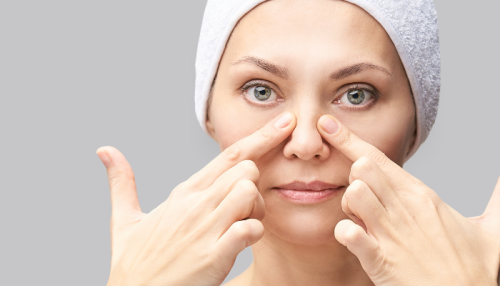Using the diaphragm, breathing to relax.

Reading time: about 3 minutes
When one is anxious, one is prone to upper-chest breathing and increased respiratory rate, causing a state of hyperventilation and thus decreased oxygenation in the blood; this causes many of the physiological symptoms and unpleasant feelings related to stress. Restoring the normal rhythm of breathing also has the effect of reducing physical "pressure" and anxiety. "Deep diaphragmatic" breathing is therefore a natural relaxation method.
Learn how to use the diaphragm
Breathing relaxation techniques involve exercises in learning how to use the diaphragm breathing mode. Breathing using the diaphragm, thus inflating the abdomen, puts the human body in a physical state that combats stress and helps ease psychological tension. There are many exercises to learn how to counter anxiety with breathing, but in general it involves breathing slower and deeper than the pace at which we breathe in everyday life and especially at the time of difficulties. These exercises should be practiced 10-15 minutes every day until improvement is achieved. With practice, one learns to calm down more quickly and the brain develops an automatic reflex that tends toward relaxation.
An anti-anxiety tool
We have become so accustomed to holding our breath that we do not realize we are denying the body something from which we could instead benefit greatly. The breath puts us in touch with the deepest part of ourselves. Perhaps this is also why we sometimes hold it more than necessary. Many times we tend to hold our breath when we are afraid. We take quick, rapid breaths when even unconsciously we think we are in dangerous situations or are nervous.
Under stress we get out of breath
Daily stress is one of the reasons that raises our antennae and makes us live in a perpetual state of alarm and tension. An automatic defense mechanism keeps us all tense and contracted. In the long run this becomes a very harmful habit, and we do not realize that doing so hinders breathing and also increases stress, because this kind of breathing activates the sympathetic nervous system, which is what governs the stress mechanisms. So actually holding your breath amplifies the state of tension.
A little trick: walking with mindful breathing
We can also apply the principles of proper breathing in walking. This so usual action is also the best tool to understand if the way of breathing is correct or if on the contrary it is too shallow and fast. Try checking what your breathing is like during a walk: does it remain slow and deep or does your breath become short and your heart start beating faster? If your breathing gets faster it means that you are not breathing with your diaphragm but are doing high breathing, blocked at the beginning of your collarbones, which will also make you feel an uncomfortable stiffness at the collarbone area.
How to do it in practice
When you walk, try to synchronize your steps as much as possible with your breathing rhythm. Initially just observe your progress, without trying to change it. For a while keep this natural rhythm of breathing, then as you proceed in practicing try more and more to equalize the amount of steps taken in inspiration and those taken in exhalation, regularizing it with the breath, until you equal the rhythm: practically if you take 3 steps in inhalation you should also take 3 steps during exhalation. By applying this kind of breathing to various moments in life, the benefits will soon be evident.
ATTENZIONE: Le informazioni riportate in questa pagina provengono da Fonti aziendali e sono pubblicate dopo attente verifiche delle fonti, scelte con cura e per quanto possibile aggiornate ed ufficiali, ma non devono essere considerate informazioni complete e universali, né è possibile garantire l’assenza di errori e la correttezza delle informazioni divulgate.
Testi, immagini, foto e disegni relativi a Dispositivi Medici e Presidi Medico-Chirurgici contenute in questa pagina non hanno carattere né natura di pubblicità e si rivolgono ad un pubblico clinicamente informato. Otosan srl ha la facoltà di apportare eventuali modifiche alle informazioni pubblicate senza darne avviso preventivo. È vietata la riproduzione al pubblico se non per uso strettamente personale e non pubblico.





